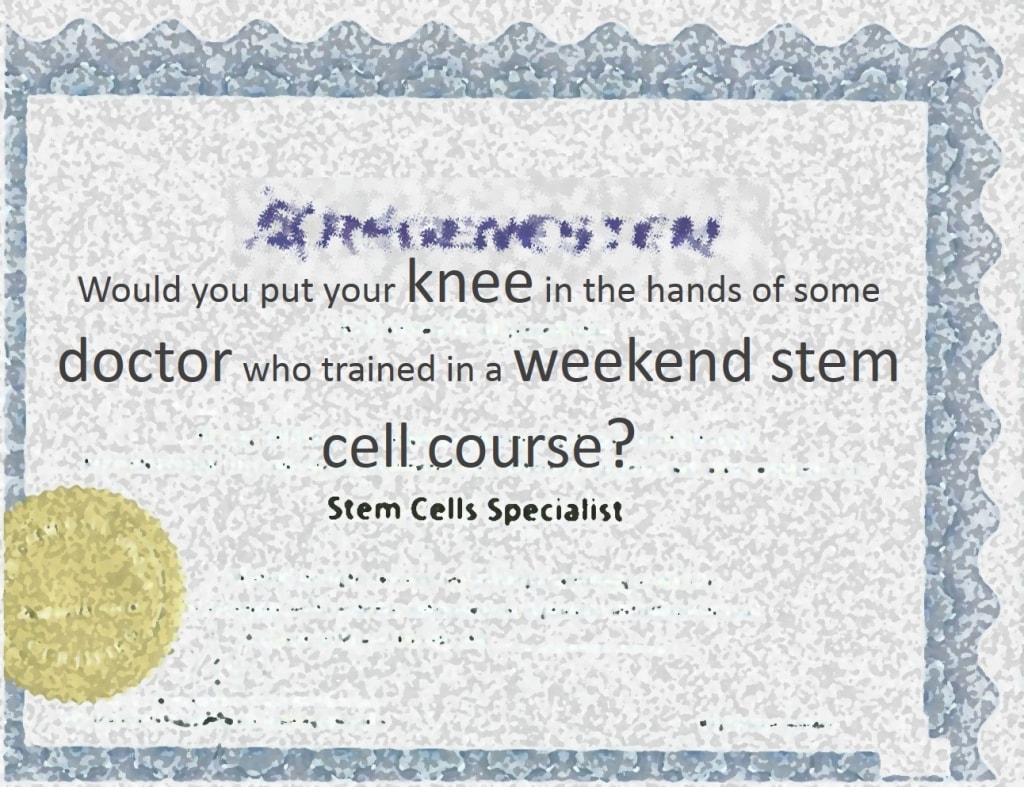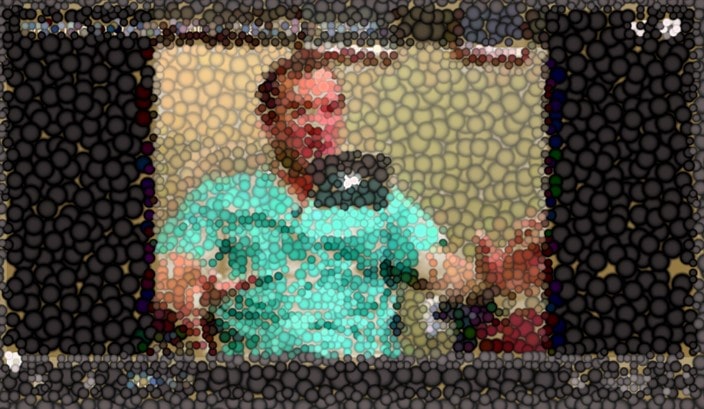Concerned About Stem Cell Knee Therapy Cost? Read on…
Concerned about stem cell knee therapy cost? After all, how hard could this stuff be? I met a patient today who exemplified what’s wrong with that wild wild west of stem cells out there.
This gentleman has a medical degree from Libya and is getting his doctorate in public health in the U.S. In 2010 he hyper-extended his knee while playing soccer and was told he needed surgery. Thus began his knee stem cell treatment journey which has taken him to the mid-west, Utah, and now to Colorado. Only his last stop on that journey (Colorado) yielded any success and his experiences will hopefully allow other patients to avoid the crazy stem cell journey, save money, and move quickly towards recovery.
When the patient inured his knee and was told he had a lateral meniscus tear, like many patients he took the advice of his surgeon and had knee arthroscopy. The surgeon promptly removed much of his lateral meniscus, but his pain wasn’t any better. He was then told that he needed PRP, so he decided to get that done by a physician in Miami. This didn’t help much, so he began a journey on the Internet to find ways to help his knee. He chanced upon a web-site from a group in Chicago that was very experienced in prolotherapy and recently bolted onto their practice a unique “stem cell” procedure. I’ve blogged on the “stem cell prolotherapy” procedure, where prolotherapy solution and bone marrow that is taken from the knee bone through a drill is re-injected into the knee. The procedure didn’t work.
Let’s explore a bit more about why mixing a bone marrow aspirate taken from the knee with prolotherapy solution and re-injecting it into the knee is a bad idea on many levels. First, as I’ve blogged before, while convenient for the doctor, the tibia bone is not the best source of stem cells for treatment as it dramatically under performs the number you can get from back of the hip (PSIS area). So this procedure began with a handicap. Second, the other problem with the tibia is that you have to drill through very dense bone and without filtering out bone spicules (i.e. the bone marrow wasn’t processed in any way), you can re-inject these into the knee. This likely happened to him, as he reports his knee “blew up”. Third, prolotherpy solution is a powerful chemical debriding agent that works by killing off some of the cells it contacts, no different than debriding a non-healing would by pulling dead parts out surgically. This osmolar debridement can have very profound and important effects on ligament tightening for patients with lax or injured ligaments. Having said that, our lab data showed that mixing prolotherapy solution and stem cells guarantees the stem cells will be dead on arrival, as the solution kills the stem cells.
After the “stem cell prolotherapy” failed he saw another web-site for a doctor in Utah. The site looked impressive and said the doctor was “fellowship trained” in stem cells and used imaging guidance and had learned from the best. So he headed out to Utah and this procedure failed as well. Why?
Let’s explore a bit why the Utah stem cell treatments didn’t work. First, the doctor wasn’t an M.D. or D.O. or a licensed physician, but a naturopath. While I have nothing against naturopathy (my kids see one for allergies), there simply isn’t a comparison between the procedural sophistication level of medical and naturopathy training. Having said that, many of my M.D. brethren know little about how the musculoskeletal system works, so maybe this guy’s “stem cell fellowship” was important? We train fellows in regenerative medicine in a year long program that’s 40 hours a week and a total of 2,000 hours (not including the approximately 1,000 extra hours they add through study). Half of that time is devoted to clinical work and half to publishing research. During that time they have a checklist as long as their arm of procedures they must master and be checked on. So what was the Utah doctor’s “fellowship”? A series of weekend courses taught by folks who frankly know little about stem cells. This “fellowship” is a course designed to generate income for it’s parent company rather than a year long deep dive into interventional orthopedics. The naturopath also claimed to learn from “famous doctors”. One visited us in 2008 and began using stem cells in 2010 and knows little about stem cells, teaching his course attendees a scientifically inaccurate stem cell harvest procedure as recently as last year (we’ve known for a decade that this method was not the best way to get the most stem cells). The other physician is the author of this botched foray into the fat stem cell research. The imaging guidance skills? I’m unsure on that one, but the patient relates that as a physician himself, the only thing this doctor did was to confirm he got the stem cells in the knee joint (missing most of the target tissues that would ultimately provide this gentleman relief).
Last year this physician patient bit the bullet and traveled out to Colorado. It was quickly identified that his ACL ligament, LCL ligament, and popliteus tendon were involved as much as his meniscus. So for the first time, he got:
1. Stem cells harvested from the right place
2. Stem cells that hadn’t been killed off by prolotherapy or the toxic anesthetics most physicians use
3. Stem cells and platelets processed at concentrations many times over what the Chicago and Utah clinics injected
4. Stem cells placed under imaging guidance and into the right spots to do some good
The result? 60% relief. So yesterday he came back for a second procedure.
The upshot? As I’ve blogged many times before, it’s the wild west out there. Don’t waste time, energy, and money going to clinics that learned their craft from a weekend course! This is complex stuff, which is why we’re so picky about who we train. I can’t guarantee that any individual patient will respond, but I can say that there is simply no other clinic and network of physicians in the U.S. that invests more resources and money into stacking the deck in our patients’ favor.

If you have questions or comments about this blog post, please email us at [email protected]
NOTE: This blog post provides general information to help the reader better understand regenerative medicine, musculoskeletal health, and related subjects. All content provided in this blog, website, or any linked materials, including text, graphics, images, patient profiles, outcomes, and information, are not intended and should not be considered or used as a substitute for medical advice, diagnosis, or treatment. Please always consult with a professional and certified healthcare provider to discuss if a treatment is right for you.


